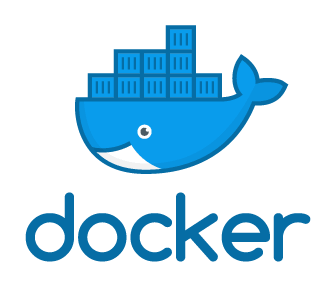
Docker tutorial – Create Docker Images using Multi-stage builds
From the last post, we have understood what is container & why do we use containers in general. Just to recap here are some of the key points
- Containers are an abstraction at the app layer that packages code and dependencies together. Multiple containers can run on the same machine and share the OS kernel with other containers, each running as isolated processes in userspace. Containers take up less space than VMs (container images are typically tens of MBs in size) and start almost instantly.
- A container image is a lightweight, stand-alone, executable package of a piece of software that includes everything needed to run it: code, runtime, system tools, system libraries, settings.
- Containers run apps natively on the host machine’s kernel. They have better performance characteristics than virtual machines that only get virtual access to host resources through a hypervisor. Containers can get native access, each one running in a discrete process, taking no more memory than any other executable.
In this post, we are going to take look at optimizing the images using multi-stage builds. Multi-stage builds are a new feature requiring Docker 17.05 or higher on the daemon and client.
This quickstart assumes basic understanding of Docker concepts, please refer to earlier posts for understanding on Docker & how to install and containerize applications.
Quick Snapshot
Why Multi-stage builds?
In your project, you would have two or more Dockerfiles i.e., one for Development and another one for Production. One file would have the steps to build the binary and artifacts using a development container, the second would be optimized for production and not include any of the development tools.
With a multi-stage builds feature, you can use multiple FROM statements in your Dockerfile. Each FROM instruction can use a different base, and each of them begins a new stage of the build. You can selectively copy artifacts from one stage to another, leaving behind everything you don’t want in the final image. To show how this works, Let’s adapt the Dockerfile from the previous section to use multi-stage builds. Example below :
Dockerfile:
FROM golang:1.7.3
WORKDIR /go/src/github.com/alexellis/href-counter/
RUN go get -d -v golang.org/x/net/html
COPY app.go .
RUN CGO_ENABLED=0 GOOS=linux go build -a -installsuffix cgo -o app .
FROM alpine:latest
RUN apk --no-cache add ca-certificates
WORKDIR /root/
COPY --from=0 /go/src/github.com/alexellis/href-counter/app .
CMD ["./app"]
Step #1. Setup Docker
- From the docker site, install the latest version of the docker for your platform. Docker is available in two editions: Community Edition (CE) and Enterprise Edition (EE). Docker Community Edition (CE) is ideal for developers and small teams looking to get started with Docker and experimenting with container-based apps. Docker Enterprise Edition (EE) is designed for enterprise development and IT teams who build, ship, and run business-critical applications in production at scale.
- Once the installation of docker is over, check the installation by running following command docker run hello-world:


Image- docker hello world - Run docker –version to check the version of the docker you’re running.


Image- check docker version
OK, now we have got the docker setup,next step is to define the docker container.
Step #2. Create Multi-stage build Dockerfile for our container


Before we start, use docker images command to check the list of images.
Using your favorite editor, create a Multi-Stage Dockerfile. The first stage using the Golang SDK to build a binary. The second stage copies the resulting binary into an optimised Docker Image.
FROM golang:1.6-alpine
RUN mkdir /app
ADD . /app/
WORKDIR /app
RUN CGO_ENABLED=0 GOOS=linux go build -a -installsuffix cgo -o main .
# Second Stage
FROM alpine
EXPOSE 80
CMD ["/app"]
# Copy from first stage
COPY --from=0 /app/main /app
Step #3. Build Docker Image
Now that we have completed Dockerfile, next step is to build Docker image by docker build command
Build the image using the docker build command below.
docker build -f m1docker -t golang-app .


The result will be two images. One untagged that was used for the first stage and the second is the target image.
Congrats! Today you’ve successfully built container image using Multi stage build.


When using multi-stage builds, you are not limited to copying from stages you created earlier in your Dockerfile. You can also use the COPY --from instruction to copy from a separate image, either using the local image name, a tag available locally or on a Docker registry, or a tag ID. The Docker client pulls the image if necessary and copies the artifact from there. Example below
COPY --from=nginx:latest /etc/nginx/nginx.conf /nginx.conf
There is much more to the Docker platform than what was covered here, but now you would have got a good idea of the basics of building containers using multi-stage builds.
Like this post? Don’t forget to share it!
Useful Resources:
- Official documentation as a reference to understand any command.
- Best Practices article on writing Docker files.
- TOP 6 GUI tools for managing Docker environments
- Docker tutorial – Build Docker image for your Java application
- Test your knowledge on Dockerfile.
- Everything You Need To Know About Docker Enterprise 3.0
- How to aggregate Docker Container logs and analyse with ELK stack ?
- Implementing secure containers using gVisor+Docker tutorial





Average Rating